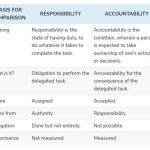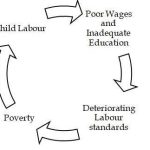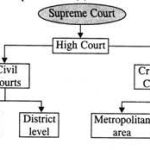
Election issues
Table of Contents
- 1 EVM
- 2 Significance of EVMs
- 3 Critical Perspective
- 4 Way Ahead:
- 5 Importance of Voting
- 6 Way Forward
- 7 Way
- 8 CRIMINALIZATION OF POLITICS
- 9 Electoral Bonds
- 10 Issues with electoral funding
- 11 Ways to bring more transparency in political funding— Bring Parties under RTI (Bhutan, Germany)
- 12 WOMEN PARTICIPATION IN POLITICS
- 13 Need for more women participation in politics
- 14 DRAFT RECOMMENDATIONS OF ECI ON ELECTORAL REFORMS
- 15 Way forward for Party reforms–
EVM
Significance of EVMs
Decline in election fraud such as booth capturing
Resulted in increased voter turnout
Quick Counting + No issue of invalid votes + eco-friendly
With addition of VVPAT—“Auditability” added to process
Madras HC upheld its Legitimacy
Safety Features of EVMs Acc. to ECI
Robust Security protocol— Non-Reprogrammable
Standalone machines & not networked by any wired
Critical Perspective
EVMs had failed to prove itself on fronts like—T/P, verifiability & secrecy— 3 pillars of free & fair election. Although first 2 gaps are plugged by VVPATs but, secrecy still remained unaddressed
VVPATs has its inherent faultlines like sensitivity to extreme weather & light.
Opaqueness in EVMs forced nations such as Netherlands, Ireland to scrap them & return to ballot.
Way Ahead:
VVPAT auditing can serve its purpose only when detection of even one faulty EVM entail VVPAT hand-counting of all EVMs in that constituency.
Totaliser Machine— recom by LCI to further the secracy of voting.
Blockchain tech can be explored as a future alternative to EVM Conclusion
Challange for ECI to regain trust & confidence of all stakeholders.
In Democracy legitimacy of Govt is derived from people’s will which is expressed through the vote, Thus,Not only must this vote be recorded & counted correctly, but it must also be seen to be recorded & counted correctly.
Retreating back to ballot paper will not make sense rather efficiency, credibility & transparency of EVM-VVPAT process needs to be improved.
Voter turnout
67.4% (61 cr) in 2019—highest ever + highest ever participation by women voters.
Steps taken
National Voters’ Day— To make voters realise imp of voting
NOTA
SVEEP—To educate voters
Increased access to polling station to Divyangs, people in far-off places Model Polling Booths dev to facilitate women, children & old people.
To enhance trust— EVM with VVPAT, declare their criminal record
Importance of Voting
To realise Lincoln’s idea of Democracy
Sense of Empowerment: ‘ownership of Govt’. To make Govt more responsible & A/c.
Way Forward
Proxy voting
Facilitate voting for migrants—Aadhaar-linked voter-ID to aid portability of voting rights
One Nation One Voter ID— for ballot portability & empower the forgotten migrant voter
Challenges for ECI to ensure Free & Fair Elections:
Money power— No spending limit for parties.
Paid news—Manipulation of the media
Misuse of social media
Criminalization of politics
Caste & Religion Politics—NOTA is welcome
Issue of electoral bonds & Black money
Hate speech by politicians
EVM tampering issue
Financial transparency in political parties:
Maintaining its Credibility
Way
Amend Sec 126(1) to impose “campaign silence period” on print, electronic media & intermediaries.
CRIMINALIZATION OF POLITICS
Rising participation of criminals in electoral process & their selection as elected rep of people.
SC called it an “extremely disastrous & lamentable situation” + raised concerns about “unsettlingly increasing trend”
PIF case 2018—Criminal antecedent be widely publicized through diff media + websites of party Supreme Court directives (2020)—
- Mandatory for parties to publish detailed information regarding candidates with pending criminal cases + reasons for selecting them over others
- Publish Such details on websites, 1 local vernacular newspaper & 1 national newspaper + on official social media platforms
- Reasons for their selection shall be w.r.t qualifications, achievements & merit and not mere “winnability” at the polls.
- Publish these details within 48 hr of selection of candidate + then submit a report of compliance with these directions to ECI within 72 hr of the selection of said candidate.
- If a party fails to submit such compliance report with ECI—EC shall bring such non-compliance by party concerned to the notice of SC as contempt of Court’s orders/directions.
Reasons for CoP—
Denial of Justice & RoL— Only 6% of the criminal cases against MPs & MLAs ended in a conviction,in contrast to overall conviction rate of 46% at national level under IPC
FPTP
Money and muscle power
Lack of value based politics
Lack on inner party democracy
Acceptance—ADR— Winnability of criminal candidates is 2x Impacts
- Loss of public faith in Judicial machinery—As those with political influence take advantage of their power by delaying hearings, obtaining repeated adjournments & filing innumerable interlocutory petitions to stall any meaningful progress.
- Tainted Democracy— Where RoL is weakly enforced & social divisions are rampant
- Padmanabhaiah Committee—Corruption is the root cause of both politicization & criminalization of police + Criminalization of police cannot be de-linked from CoP.
- Law-breakers get elected as law-makers—DOP—Leg lose legitimacy
- Dwindling probity in public life—increased corruption,
- Introduces a culture of violence in society
Way Forward
Law Commission— Disqualification of tainted politicians at the stage of framing of charges, with adequate safeguards
Filing of a false affidavit should qualify as a ‘corrupt practice’ under RPA
Electoral Bonds
Introduced in Budget 2017- 18 to “cleanse system of political funding”
An interest free financial instrument to make anonymous donation to any political party
Rationale—
To limit use of cash in political funding + curb illicit means of funding
Curb black money—As Payments for EBs are accepted only by DD, cheque etc
Eliminate fraudulent parties—that were formed on for tax evasion—as there is a stringent clause of eligibility for parties in scheme.
Protects donor from political victimization—Due to non-disclosure of his identity
Issues—
Opacity still persists—As—
Prior to EBs, parties had to maintain records of donations above Rs 20K—But EBs are kept out of this requirement.
Parties are legally bound to submit annual IT returns under Sec 13A of IT Act, 1961. But EBs have been exempted from IT Act.
Allowed unbridled corporate influence—Earlier, no company could donate more than 7.5% of its profits to a party—But this limit was removed in this scheme.
Lack of level playing field in terms of pol fundin—
Sec 29B of RPA was amended—restricting benefits of EBs only to a few parties. Rruling party received 94.6% of all EBs sold in 2017-18.
Issues with electoral funding
Opacity in donations— Anonymous cash donations + As parties are exempted from income tax—so provides a channel for black money hoarders.
Lack of action against bribes—ECI suggest insertion of Sec 58B to RPA to enable it to take action if parties bribe voters
Allowing foreign funding— FCRA Amendment opened floodgates of foreign funding to parties
Ways to bring more transparency in political funding— Bring Parties under RTI (Bhutan, Germany)
Est a National electoral fund where donors contribute + funds distributed acc to performances of parties in last elections.
2nd ARC, NCRWC—State funding of elections Cap max exp of political parties
WOMEN PARTICIPATION IN POLITICS
Trends in women’s participation in politics LS (1st—4.4%, 17th—14.4%), RS(6.9%, 11.4%)
Lower than Global Avg—22.9%—153/190 in % of women in lower house
13.45 lakh EWRs
Lokniti-CSDS survey—
S-E class determine pol participation of women— Upper castes & upper class— More active in politics
Increased participation of women as voters
Ltd autonomy in taking decisions about politics
More preference to male candidates
Patriarchy is biggest obstacle
Increasing interest in politics but unwillingness for politics as a career:
Need for more women participation in politics
Addressing women related & other social issues—Malnutrition, anemia, repro health etc For truely gender-inclusive policies Political empowerment.
Steps that need to be taken to improve women participation
Examples
Reservation in parties—Sweden, Norway, Canada
DRAFT RECOMMENDATIONS OF ECI ON ELECTORAL REFORMS
Voter Education & awareness—
Voter awareness forums & Chunav Pathshala in polling stations.
Set up Electoral Literacy Clubs in all schools (inclusion of voter education in school curriculum) & colleges.
Media as an outreach tool— 1. Use Social media
- Set up Web TV & Web radio for edu of voters
- Setup Community Radio stations.
- Periodic SVEEP Voter Facilitation
- Door-step electoral services to PwDs, Senior citizens
- Digital Election Calendar for information & schedule of Elections
- Explore new voting methods to increase voter participation
- Integration of voter registration process with Citizen-facing services such as Digi-Locker & UMANG
Cap max expenditure of political parties
Prohibit Print media & social media during ‘period of silence’ + Include them within ambit of sec
126
Way forward for Party reforms–
Intra party democracy–Transparency in ticket allocation & candidate selection
NCRWC Report–There should be comprehensive legislation regulating the registration and functioning of political parties or alliances of parties in India.
Law Commission’s 170th report– Need of laws relating to internal democracy within parties. Bring parties under RTI
Check Criminalization of ranks
Politics of India need to get back to representing the will of the people, instead of the will of the party leaders or corporate heads.








![UPSC CSE Topper Mains Answer [Gaurav Agarwal] word-image-10753-1](https://iasbio.com/wp-content/uploads/2023/06/word-image-10753-1-150x150.png)






![UPSC CSE Topper Mains Answer [Part 1] images-2023-06-17T191749.185](https://iasbio.com/wp-content/uploads/2023/06/images-2023-06-17T191749.185-150x150.jpeg)
